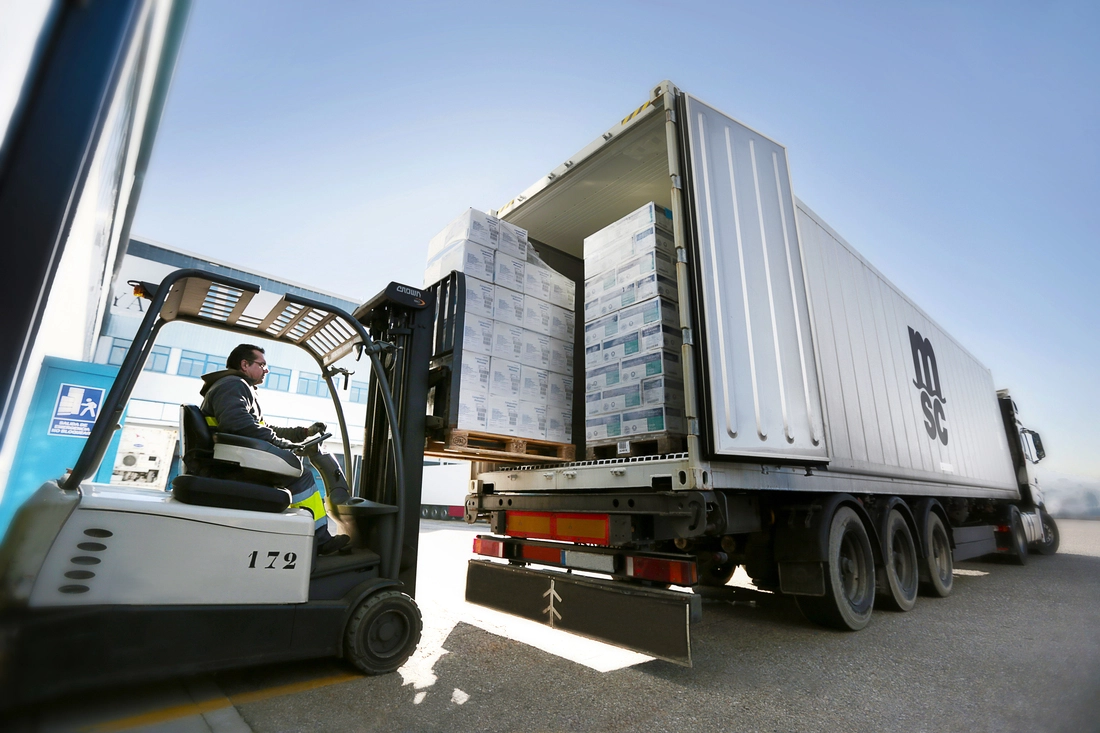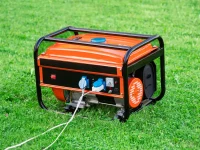Cold chain logistics for specialty coffee: maintaining flavor and freshness

Specialty coffee has become a booming industry, with consumers increasingly seeking out high-quality beans that offer unique flavors and aromas. From single-origin coffees to rare and exotic varietals, the demand for specialty coffee has skyrocketed, with more and more people willing to pay a premium for a superior cup. However, what many coffee enthusiasts might not realize is that maintaining the flavor and freshness of specialty coffee throughout its journey from farm to cup is a complex process—one that relies heavily on cold chain logistics.
In this blog post, we’ll explore the critical role that cold chain logistics plays in preserving the quality of specialty coffee. We’ll delve into the science behind coffee freshness, discuss the unique challenges involved in transporting coffee, and highlight some of the lesser-known strategies and technologies used to ensure that your coffee arrives in perfect condition.
The science of coffee freshness
Before diving into the logistics, it’s important to understand why maintaining the freshness of coffee is so crucial. Coffee beans are a delicate agricultural product that is highly susceptible to changes in temperature, humidity, and exposure to air. These factors can significantly impact the flavor and aroma of the coffee, leading to a subpar experience for the consumer.
The role of temperature in coffee quality
Temperature plays a critical role in the degradation of coffee. Once coffee beans are roasted, they begin to undergo a series of chemical reactions that can lead to the loss of flavor compounds, the development of off-flavors, and the staling of the coffee. These reactions are accelerated by higher temperatures, which is why keeping coffee cool is essential for preserving its quality.
Cold temperatures slow down the oxidation process that causes coffee to go stale. Oxidation occurs when the oils and compounds in coffee beans are exposed to oxygen, leading to a breakdown of the flavors and aromas that make specialty coffee so desirable. By maintaining a consistent, cool temperature, cold chain logistics can help extend the shelf life of coffee and preserve its flavor profile.
Moisture and humidity: the enemies of coffee freshness
Moisture is another critical factor that can affect the quality of coffee. Coffee beans are hygroscopic, meaning they absorb moisture from the surrounding environment. High humidity levels can lead to the absorption of excess moisture, which can cause the beans to lose their crispness and develop mold or mildew.
Cold chain logistics helps mitigate the impact of humidity by controlling the environment in which the coffee is stored and transported. By maintaining a dry, cool environment, the risk of moisture absorption is minimized, ensuring that the coffee remains fresh and free from contaminants.
Stat insight: according to a study published in the journal of food science, coffee stored at cooler temperatures (below 15°c) retains its flavor and aroma for up to 60% longer compared to coffee stored at room temperature.
The challenges of cold chain logistics for coffee
While cold chain logistics is well-established in industries like pharmaceuticals and fresh produce, applying it to specialty coffee presents unique challenges. Coffee is typically grown in tropical regions, far from the consumer markets where it is ultimately consumed. This means that coffee beans must travel long distances, often across multiple climate zones, before reaching the roastery or end consumer.
Transportation and storage
The journey of specialty coffee begins at the farm, where the beans are harvested and processed. From there, the beans are typically shipped to a roastery, where they are roasted to bring out their unique flavors. Throughout this journey, maintaining the appropriate temperature and humidity levels is crucial.
Cold chain logistics involves the use of temperature-controlled storage facilities and transportation methods, such as refrigerated containers and trucks. However, ensuring that the cold chain remains unbroken throughout the entire journey can be difficult, particularly when dealing with international shipments that may pass through multiple ports and customs checkpoints.
Cost considerations
Implementing cold chain logistics for specialty coffee also comes with cost considerations. The use of refrigerated storage and transportation is more expensive than traditional methods, and these costs can add up, particularly for small-scale coffee producers and roasters. However, the investment in cold chain logistics can pay off in the form of higher-quality coffee that commands a premium price in the market.
Environmental impact
Another challenge associated with cold chain logistics is its environmental impact. Refrigeration and temperature control require significant energy resources, contributing to the carbon footprint of the coffee supply chain. As consumers become more conscious of the environmental impact of their purchases, the specialty coffee industry must balance the need for quality preservation with sustainability considerations.
Example: some specialty coffee producers are exploring the use of renewable energy sources, such as solar-powered refrigeration, to reduce the environmental impact of cold chain logistics while still maintaining the freshness of their coffee.
Strategies for maintaining coffee freshness through cold chain logistics
To overcome the challenges associated with cold chain logistics, the specialty coffee industry has developed a range of strategies and technologies designed to preserve the flavor and freshness of coffee beans throughout their journey from farm to cup.
1. Controlled atmosphere packaging
One of the most effective methods for preserving coffee freshness during transportation is controlled atmosphere packaging. This involves sealing the coffee beans in airtight containers with a carefully controlled mixture of gases, such as nitrogen, which prevents oxidation and slows down the degradation of the coffee. This method is particularly effective for green (unroasted) coffee beans, which are more susceptible to environmental changes.
Controlled atmosphere packaging can be combined with cold chain logistics to provide an additional layer of protection against temperature fluctuations and humidity. By maintaining a stable internal environment within the packaging, the coffee is shielded from external conditions that could compromise its quality.
Example: specialty coffee roasters like blue bottle coffee use nitrogen-flushed packaging to extend the shelf life of their beans, ensuring that customers receive coffee that is as fresh as possible.
Stat insight: research from the specialty coffee association (sca) shows that coffee stored in nitrogen-flushed packaging retains its flavor profile for up to 12 months, compared to just a few weeks for coffee stored in traditional packaging.
2. Temperature-controlled transportation
Temperature-controlled transportation is a key component of cold chain logistics for specialty coffee. This involves using refrigerated containers and trucks to maintain a consistent temperature throughout the transportation process. By keeping the coffee cool, the degradation of flavor compounds is minimized, and the beans arrive at their destination in optimal condition.
For international shipments, temperature-controlled containers (also known as reefer containers) are used to transport coffee across long distances. These containers are equipped with refrigeration units that maintain a set temperature, regardless of external conditions. This ensures that the coffee remains cool even during long ocean voyages or when passing through warm climates.
Example: some specialty coffee importers use reefer containers to transport green coffee beans from tropical regions to roasteries in north america and europe, maintaining a consistent temperature throughout the journey.
Stat insight: according to a report by the international coffee organization (ico), the use of temperature-controlled transportation can reduce the loss of coffee quality by up to 30% during long-distance shipping.
3. Real-time monitoring and iot integration
The integration of internet of things (iot) technology into cold chain logistics has revolutionized the way coffee is transported and stored. Iot-enabled sensors can be placed inside containers and packaging to continuously monitor temperature, humidity, and other environmental factors. This data is transmitted in real-time to logistics managers, who can take immediate action if any deviations from the optimal conditions are detected.
Real-time monitoring allows for greater control over the cold chain, reducing the risk of temperature excursions that could compromise the quality of the coffee. It also provides valuable data that can be used to optimize logistics processes and improve overall efficiency.
Example: iot-enabled temperature sensors are increasingly being used by specialty coffee importers to monitor the conditions inside shipping containers in real-time, ensuring that the beans are kept at the ideal temperature throughout their journey.
Stat insight: a study by cold chain iq found that the use of iot technology in cold chain logistics can reduce the incidence of temperature excursions by up to 50%, significantly improving the quality of temperature-sensitive products like specialty coffee.
4. Sustainable cold chain practices
As the specialty coffee industry continues to grow, there is increasing pressure to adopt more sustainable practices in cold chain logistics. This includes the use of energy-efficient refrigeration systems, renewable energy sources, and environmentally friendly packaging materials.
Some companies are exploring innovative solutions such as solar-powered refrigeration units and biodegradable packaging to reduce the carbon footprint of cold chain logistics. These practices not only help preserve the environment but also appeal to eco-conscious consumers who are willing to pay a premium for sustainably produced coffee.
Example: certain specialty coffee brands are investing in solar-powered cold storage facilities at origin, allowing coffee producers to store their beans in optimal conditions without relying on fossil fuels.
Stat insight: the global coffee platform reports that implementing sustainable practices in the coffee supply chain can reduce greenhouse gas emissions by up to 20%, contributing to a more environmentally friendly coffee industry.
Conclusion
Cold chain logistics plays a critical role in maintaining the flavor and freshness of specialty coffee, ensuring that consumers receive a product that lives up to its premium reputation. From controlled atmosphere packaging and temperature-controlled transportation to real-time monitoring and sustainable practices, the strategies and technologies used in cold chain logistics are essential for preserving the unique qualities of specialty coffee.
As the demand for high-quality coffee continues to grow, the specialty coffee industry must continue to innovate and refine its cold chain logistics practices. By doing so, producers, roasters, and retailers can ensure that their coffee reaches consumers in peak condition, delivering the exceptional flavors and aromas that make specialty coffee so sought after.
For coffee enthusiasts who value quality and sustainability, understanding the importance of cold chain logistics offers a deeper appreciation of the journey their coffee takes before it reaches their cup. In a market where freshness is paramount, cold chain logistics is the key to unlocking the full potential of specialty coffee, ensuring that every sip is as delicious as the last.







